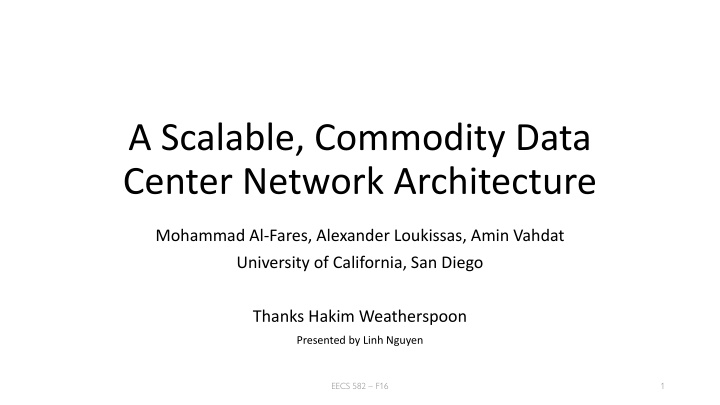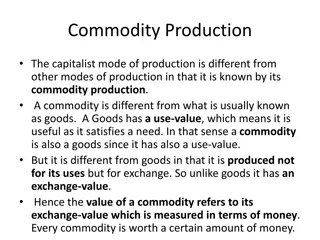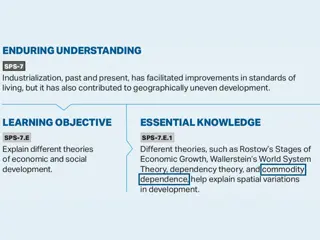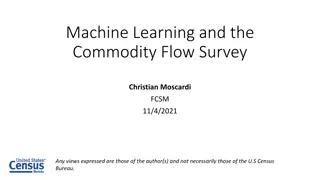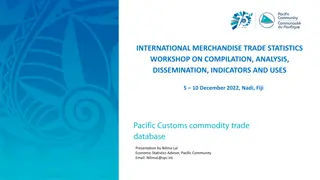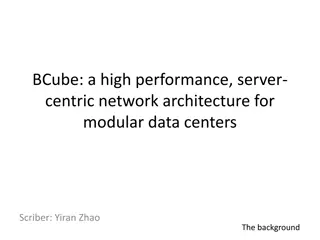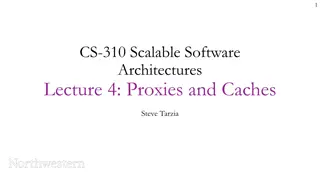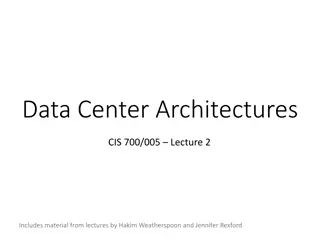Scalable Commodity Data Center Network Architecture Overview
This presentation explores a scalable commodity data center network architecture focusing on background, desired properties, fat-tree based solutions, oversubscription, multi-path routing, cost analysis, and solutions to core network problems.
Download Presentation

Please find below an Image/Link to download the presentation.
The content on the website is provided AS IS for your information and personal use only. It may not be sold, licensed, or shared on other websites without obtaining consent from the author.If you encounter any issues during the download, it is possible that the publisher has removed the file from their server.
You are allowed to download the files provided on this website for personal or commercial use, subject to the condition that they are used lawfully. All files are the property of their respective owners.
The content on the website is provided AS IS for your information and personal use only. It may not be sold, licensed, or shared on other websites without obtaining consent from the author.
E N D
Presentation Transcript
A Scalable, Commodity Data Center Network Architecture Mohammad Al-Fares, Alexander Loukissas, Amin Vahdat University of California, San Diego Thanks Hakim Weatherspoon Presented by Linh Nguyen EECS 582 F16 1
Overview Background of current Data Center Network (DNC) architectures Desired properties in a DNC Fat-tree based solutions Evaluations EECS 582 W16 2
Background Topologies typically consist of 2-3 level trees of switches and routers 2 levels: 5K-8K hosts 3 levels: >25K hosts (focus of this paper) EECS 582 W16 3
Oversubscription ???????????????? =????? ???? ?? ??????? ????????? ???????? ????? ????????? ???????? 1:1 All hosts can use full uplink capacity 5:1 Only 20% of host bandwidth maybe available Typical ratio ranges between 2.5:1 to 8:1 Lower cost of design EECS 582 W16 4
Multi-path Routing Multi-rooted tree required to communicate at full-bandwidth Equal-Cost Multi-path Algorithm (ECMP) Performs static load splitting, cannot account for flow sizes Routing tables become very large with multiple paths EECS 582 W16 5
Cost Analysis EECS 582 W16 6
Cost Analysis (cont.) EECS 582 W16 7
Problems? Single point of failure Core routers are bottleneck Require high-end routers (expensive) High cost: Edge: $7,000 for each 48-port GigE switch Aggregation and Core: $700,000 for 128-port 10GigE switches Approximately $37M Prohibitive! EECS 582 W16 8
Properties of Solutions Backwards compatible with existing infrastructure No change in application Support of Ethernet and IP Cost Effective Low power consumption and heat emission Inexpensive hardware Scalable An arbitrary host can communicate with any other host at full bandwidth of its local network interface EECS 582 W16 9
Fat-tree Architecture 3-layer topology K pods Two layers of k/2 switches (?/2)2 core switches Supports ?3/4 servers EECS 582 W16 10
Why fat-tree? Can be built using cheap devices with uniform capacity Each port supports same speed as end host All devices can transmit at line speed if packets are distributed uniformly along available paths Scalability History: similar trends happened in telephone area. Charles Clos designed a network topology that delivers high levels of bandwidth for many end devices by interconnecting commodity switches EECS 582 W16 11
Routing options Flow classification: a flow is a sequence of packets Pod switches forward subsequent packets of the same flow to same outgoing port; periodically reassign a minimal number of output ports Eliminate local congestion Assign traffic to ports on per-flow basis instead of per-host basis Ensure fair distribution on flows Flow scheduling: routing large flows Edge switches detect outgoing flow whose size is above a predefined threshold, then notify a central scheduler, which tries to assign non-conflicting paths for these large flows Eliminate global congestion Prevent long lived flows from sharing the same links Assign long lived flows to different links EECS 582 W16 12
Experiment Setup 4-port fat-tree (20 switches, 16 end hosts) Each host generates a constant 96Mbit/s of outgoing traffic Benchmark suite of communication mappings with 3.6:1 oversubscription EECS 582 W16 13
Results (Network Utilization) EECS 582 W16 14
Results (Cost of maintaining switches) EECS 582 W16 15
Results (Heat and Power Consumption) EECS 582 W16 16
Packaging Increased wiring overhead is inherent One pod: 12 racks (48 machines each) Place 48 switches in centralized rack Minimize total cable length by placing racks around the pod switch EECS 582 W16 17
Discussion Scalability? How do we mitigate the problems of complex cabling, central scheduler and scale to larger scale, geo-distributed system? Evaluation? How do we set up an experiment for larger scale? Other approaches (Portland, BCube, VL2)? EECS 582 W16 18
